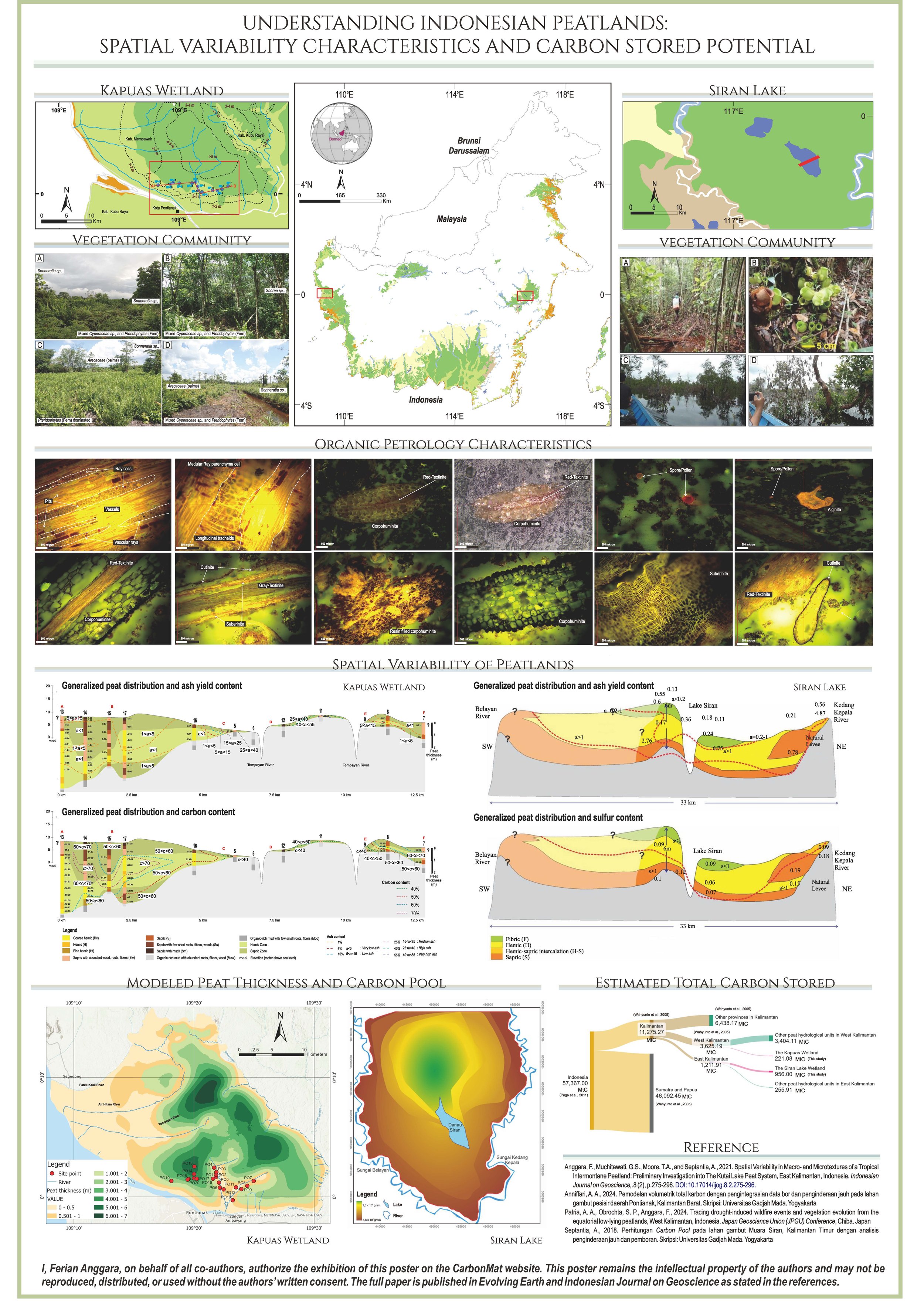Understanding Indonesia Peatlands:
Spatial Variability characteristics and carbon storage potential
Peat-carbon storage depends on both the extent of peat deposits and their internal characteristics, yet the combination of factors that shape this storage is complex and rarely uniform across landscapes. This study refines the carbon-stock estimate for the Kapuas Wetland in West Kalimantan by integrating remote-sensing datasets (UAV, Landsat 8/9, DEM) with ground-based measurements of peat thickness, peat properties, and organic-petrology data. The work reveals new details about the structure and condition of domed peatlands, distinguishing between intact and human-altered areas. Two main peat types—sapric and hemic—were recognised, each defined by distinct physical and chemical traits that strongly influence total carbon content.
Read more here:
Multivariable modelling and carbon stored estimation in peatland: Constraints from peat properties, organic petrology, and remote sensing analysis in the Kapuas Wetland, Indonesia. https://doi.org/10.1016/j.eve.2025.100080
Spatial Variability in Macro- and Microtextures of A Tropical Intermontane Peatland: Preliminary Investigation into The Kutai Lake Peat System, East Kalimantan, Indonesia. https://doi.org/10.17014/ijog.8.2.275-296.
Professor Ferian Anggara profile: linkedin.com/in/ferian-anggara-2438452ba

